 Facebook
Facebook
 X
X
 Instagram
Instagram
 TikTok
TikTok
 Youtube
Youtube


Where we go to get lost.
We’re a gregarious lot and one that can stand being cooped up in front of a television set for only so long.
Compared to what they soak you for to attend the opera or live theater, movies are still your best entertainment value.
What follows are ten auditoriums that still maintain the magic of moviegoing.
701 Fifth Avenue, Gaslamp Quarter, 619-232-0401
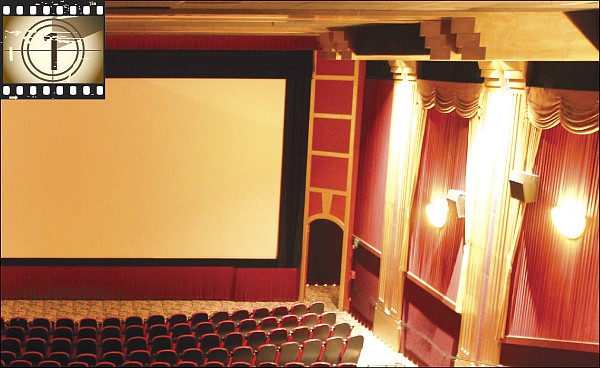
Bonus Features: A 44-x-18-foot screen, eclectic booking, and flowing velvet curtains.
Number of Seats: 476
Total Number of Screens: 15
It opened as a Pacific Theatre in November 1997 and quietly changed hands in 2008. What was once a mainstream multiplex vying for first-run hits with neighboring Horton Plaza became Reading Cinemas’ flagship theater in San Diego. It’s the best of all possible movie houses, turning its 15 screens over to everything from mainstream hits to art, foreign, and even revival bookings.
Instead of the iridescent Ringling Bros.-on-meth design scheme of Horton Plaza, architectural firm Benson & Bohl held true to the Gaslamp Quarter’s Victorian surroundings while bringing a stylish touch of ’20s art deco to the imposing two-story lobby. The interior looks like something art director Cedric Gibbons would have whipped up on an MGM soundstage. The frosted-glass doors give way to a remarkable entrance hall flanked by two stairways that lead to the upstairs theaters. There is also a frequently out-of-service escalator and, if all else fails, an elevator to transport patrons to their heavenly destination.
The #1 house is neither San Diego’s biggest nor does it lodge the most expansive screen. What it does have is something you won’t find anywhere else: lush floor-to-ceiling red-velvet curtains that act as a nostalgic reminder of what once was. The 44-x-18-foot screen is sizable enough and the sound and focus will blow you away. They recently installed a Sony 4K projector in their #7 house and the 3-D presentation is impeccable.
So why are there no lines snaking around the block clamoring for a ticket to watch a movie in San Diego’s premier showcase? Parking. With the exception of the Ken, this is the only local theater that doesn’t offer free parking. In this case, you’re going to have to work a little for your art. You didn’t hear it from me, but Horton Plaza offers three hours of free parking in their spacious lot. Save your ticket and keep an eye on the clock — every 15 minutes over the three-hour limit will set you back $2. And if you attend an evening performance, make sure to stamp your tickets prior to showtime. Take it from one who knows: the machines stop validating at 9:00 p.m., and unstamped tickets pay full price.
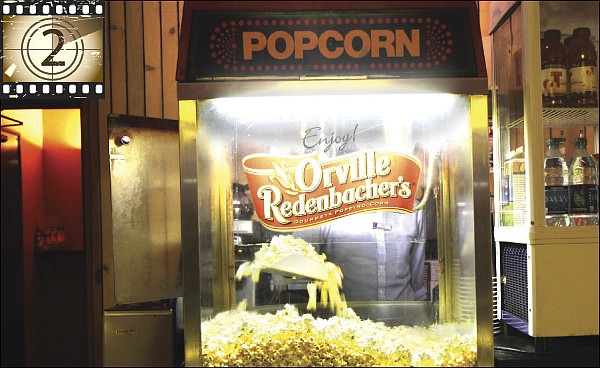
4061 Adams Avenue, Kensington, 619-819-0236
Bonus Features: Single screen house, quality films, spotless presentation, a knowledgeable staff, and the best popcorn in town!
Number of Seats: 575
Total Number of Screens: 1
Guess what turns 100 this year? Built in 1912, the Ken Cinema underwent a streamline Art Moderne makeover in 1947, and in 1975 the theater became the second house to be acquired by the Landmark chain. In its youth, the Ken was little more than a standard-issue neighborhood theater, not a patch on downtown picture palaces like the California or the Fox. In its ability to outlast its ritzier counterparts, the Ken achieved San Diego movie immortality by being the last of its breed: a single-screen neighborhood art house.
It’s a safe bet that at one point many refrigerator doors in San Diego County were enhanced by a Ken Cinema calendar, alerting film fans of their daily change of double features. That was when the Ken was known as a revival house. The theater has gone through several different personality changes over the years — for a time it appeared to follow a strict “if it’s gay, it plays” policy — finally settling into its current state as our premier venue for first-run art films.
Upon first moving to San Diego and discovering the wonders of the Ken, I would talk it up during my film intros at MoPA. Several highfalutin boardmembers called me out on my endorsement, branding the theater “uncomfortable” and “filthy looking.” How can anything as beautiful as the Ken be considered squalid? These are the same philistines who refused to allow the sale of popcorn at MoPA because the smell offended them.
The theater has since installed new seats, and what was once one of the few remaining theaters in America to project with carbon arcs switched over to xenon bulbs. In an attempt to keep abreast of the times, a Sony 4K projector recently took up permanent residence in the booth. All they need now is 3-D.
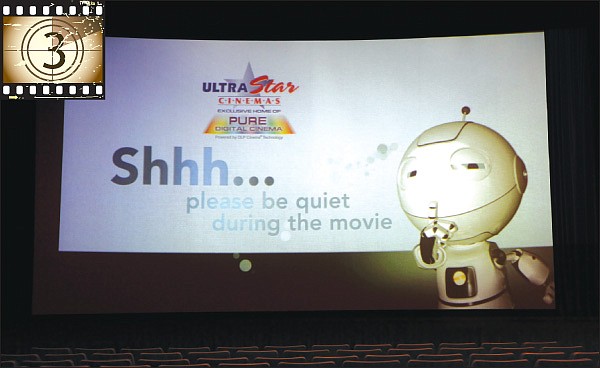
7510 Hazard Center Drive, Mission Valley, 619-574-8684
Bonus Features: Side-to-side masking and curtains that work!
Number of Seats: 398
Total Number of Screens: 7
It opened in 1990 as part of the Mann chain and for a brief time was owned by Madstone. (Was there ever a less conducive name for an entertainment venue than Madstone Hazard Center?) Currently run by locally based UltraStar Cinemas, San Diego’s premier showcase for film festivals (Asian, Jewish, and Latino) is facing demolition.
Two years ago it was announced that UltraStar Hazard Center was slated to meet the wrecking ball. An off-ramp from the 163 is in the works to give drivers easier access to the shopping center. Something had to give.
The good news is the theater has been given a stay of execution, so to speak, and should be around for at least two more years. Six of the seven screens are no great shakes, but house #7 is a marvel. Excitement surges every time the traveling curtains open to reveal the massive 40-x-16-foot curved screen. Their impeccable exhibition of Jackie Chan’s Little Big Soldier for the Asian Film Festival was last year’s single most memorable presentation. The focus was so sharp you could count the grain pattern.
There is not much time left to take advantage of the space — the two years will pass faster than the pop of a flashbulb — so by all means make it one of your destination cinemas.

3965 Fifth Avenue, Hillcrest, 619-819-0236
Bonus Features: Quality films, spotless presentation, a knowledgeable staff, and no more Stella Artois beer commercials before each movie.
Number of Seats: 316
Total Number of Screens: 5
Built by Landmark Theatres in 1991, Hillcrest Cinemas stands firm in its commitment to bringing the finest in art, independent, and foreign films to the community. Prior to Reading Cinemas’ arrival in 2008, chances are if it was a quality art film, it played at either Hillcrest, the Ken, the La Jolla Village, or the late, lamented Cove, all Landmark Theatres.
Hillcrest has been forced to change with the times, particularly between January and April, when the smaller art films take a backseat to potentially moneymaking awards winners and contenders. Far be it from me to begrudge their success, as these films, along with compensatory hits such as The Blair Witch Project and Napoleon Dynamite, ensure that the artier product, prone to underperforming, will follow in their wake.
It is almost unfair to include the #1 Hillcrest on this list because it feels more like home than an afternoon at the movies. Not long after I hit town in 2001, it became clear that the majority of the morning press screenings would be held there. A disc jockey at a nighttime promotional show was handing out bumper stickers and one just happened to find a permanent home plastered to the bottom of my favorite seat to help mark the territory. You never know when that morning cup of coffee is going to hit, and on the rare occasions that a mid-movie visit to the restroom is in order, the sticker makes it easier to find my place in the dark.
Two thousand screenings later, the sticker remains in that treasured spot. I invite you to try it out, just not when I am in attendance.

5500 Grossmont Center Drive, La Mesa, 619-465-3040
Bonus Features: Side-to-side masking and the largest screen(s) in town!
Number of Seats: 625
Total Number of Screens: 10
Size matters! Built as a Pacific Theatre in the early ’90s to replace an existing triplex, the Grossmont Center 10 is home to the largest viewing surfaces in the area. Both theaters #1 and #10 house enormous 60-x-24-foot screens.
As with Reading Cinemas Town Square, an ever-changing touch of homemade craftsmanship in the form of employee art, designed to herald upcoming pictures, can be found situated behind the lobby ticket booth. Sure it’s kitschy, but so is much of what plays on-screen. These minimalist attempts at ballyhoo add an expressive touch that in their own small way hearken back to the Golden Age of moviegoing.
10733 Westview Parkway
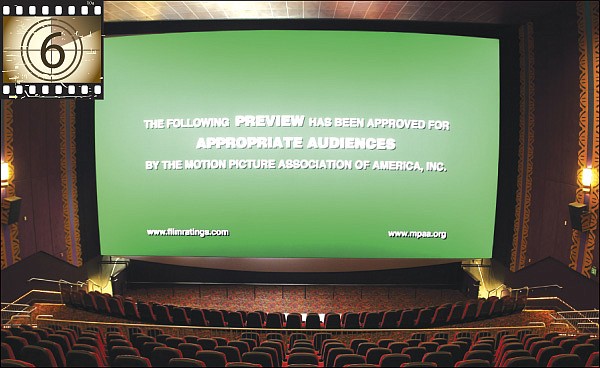
Number of Seats: 312
Total Number of Screens: 18
Built in June 2000, of all the venues up for discussion, Edwards Mira Mesa is the most efficiently run megaplex in the county. After seeing many a movie under their roof, I have the pleasure of reporting that it’s the one venue where I’ve yet to make an un-billed mid-movie cameo in the lobby to grouse about presentation issues.
Is it IMAX or LIEmax? The consensus among the cinematic cognoscenti is that in order for a film to be true IMAX, it must be projected in 70mm on a screen that measures at least 52 feet high and 72 feet across. The digital IMAX house at Edwards Mira Mesa is a reasonable facsimile thereof.
There are currently five IMAX houses serving San Diego County: Edwards Mira Mesa, AMC Mission Valley 20, AMC Palm Promenade 24, AMC Westfield Plaza Bonita, and the domed IMAX at the Reuben H. Fleet Science Center in Balboa Park. The latter was the first giant screen house to grace our town and is the real deal when it comes to fitting the proper technical specifications. With this tradition of excellence comes the equally customary selection of non-narrative, wide-gauge science and nature documentaries that tend to resemble high-end versions of the National Geographic Channel. And no matter how many times they try to solve the problem, the seams in a domed IMAX screen remain annoyingly visible during brightly lit scenes.
The closest we come to genuine IMAX is the Edwards Spectrum IMAX Theater in Irvine. Of the four local-area IMAX screens I’ve visited (one day, Plaza Bonita), Mira Mesa is the amazing colossal screen du jour. Management was loath to release specific screen dimensions, but a quick eyeballing gives it a slight edge over its counterparts in Mission Valley or Palm Promenade.
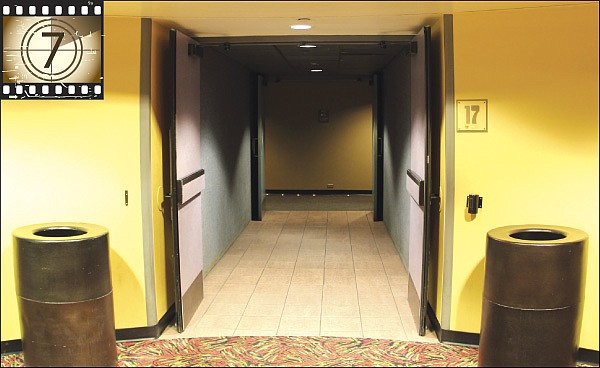
1640 Camino Del Rio North
Bonus Features: Curved screen and side-to-side masking.
Number of Seats: 323
Total Number of Screens: 20
AMC’s first stadium-seating theater erected in San Diego, the Mission Valley 20 is one of the chain’s top performers. The place is fairly imposing; no local megaplex has more screens. You might want to think about renting a golf cart to transport you to the back auditoriums.
AMC Mission Valley was my first brush with stadium seating. While vacationing in 1995, the year the theater opened, I stopped by for a showing of the relatively obscure romantic comedy Paperback Romance. It was like stepping onto Noah’s Ark, had the vessel come equipped with high-backed turquoise blue chairs and raked rows. Once seated, you could barely see the tops of other patrons’ heads, and the unobstructed view contributed to a surprisingly pleasurable viewing experience.
It’s a crunch to get in on the weekends, and while some of their smaller cookie-cutter auditoriums are cramped and impersonal, the 40-foot screen and crisp acoustics make Cinema #17 the local jewel in AMC’s crown.
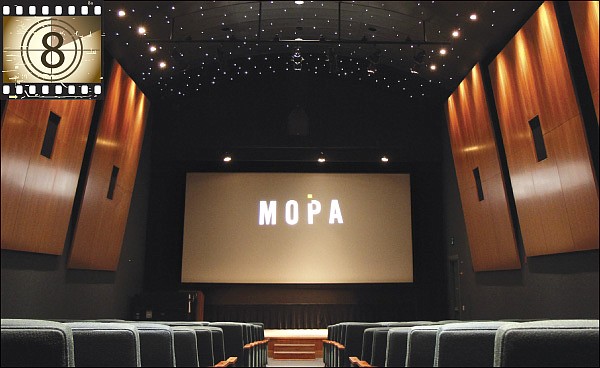
1649 El Prado, Balboa Park
Bonus Features: Twinkle lights and functioning curtains!
Number of Seats: 226
Total Number of Screens: 1
This is an auditorium I can personally vouch for, as I was there before so much as one seat was nailed to the floor. (Sadly, I cannot take credit for the twinkle lights.) As the museum’s inaugural film curator, I had the honor to ensure that MoPA’s booth, built in 2000, was the most technically proficient one in town, stocked with the finest 35mm projection and sound equipment.
The place is not perfect. The center aisle robs the auditorium of its “sweet seats,” and the cherrywood slabs that adorn the walls tend to deaden sound — but it’s unlikely you will find a venue with sharper focus and more comfortable seating than the Joan and Irwin Jacobs Theater.
Why did the MoPA film series fold? After an almost five-year run, they closed my program due to a shrinking budget and, quite frankly, a lack of interest. People don’t want to sit in a dark room watching old movies when it’s warm and sunny outside in Balboa Park.
Currently home to several local festivals (Italian, German, Coming of Age, Human Rights Watch, etc.) and MoPA’s signature POP Thursdays series, the theater doesn’t get nearly the amount of use it should.
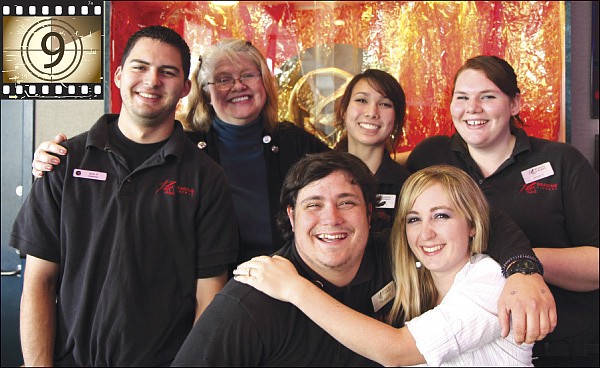
4665 Clairemont Drive, Clairemont Mesa
Bonus Features: The friendliest staff in town.
Total Number of Screens: 14
From the looks of it, Reading Cinemas Town Square is nothing more than your typical nondescript suburban house with 14 screens pumping out pretty much the same fare as any other show in town. The difference lies in management. Jennifer Deering, aided and abetted by a staff of 35, helps to make the Town Square the friendliest place in the county to watch a movie.
Deering started with Mann Theatres in the ’70s, at the 2252-seat Fox Theatre, now Copley Symphony Hall. She subsequently wound up managing several venues and was there the time Barbra Streisand visited the Valley Circle Theatre to oversee the presentation of The Main Event. “She didn’t like the color of the walls,” Deering remembers, “and had them repainted to suit her taste.”
Deering made the move to Pacific Theatres in 1996 and took command of the Clairemont Town Square in 2000. She stayed on after Reading Cinemas bought out the competing chain in 2008. When it comes to adding a personal touch to the job of multiplex overlord, Deering is this town’s supreme show person. The lobby art (particularly the jumbo standees) is always precisely assembled and situated. Except for the time a life-size Bart Simpson figure turned up missing, later to be found seated in a stall during a bathroom check.
She is not the type of manager that spends her day hiding in the office, and her knowledge of and passion for film is boundless. Next time you visit, ask to speak with “Ms. D.,” as her adoring staff calls her. Consider it time well spent in a movie theater lobby.
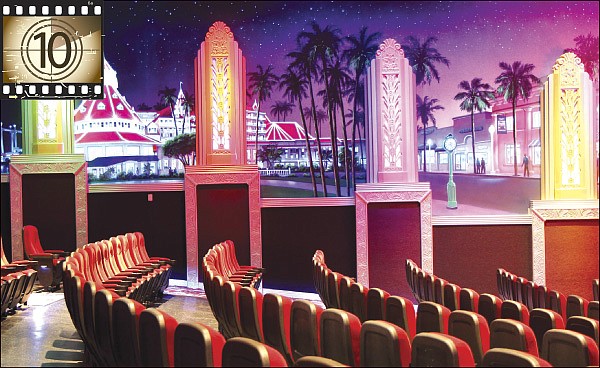
820 Orange Avenue, Coronado
Bonus Features: Art deco lobby, illuminated murals in each auditorium, and functioning curtains.
Number of Seats: 215
Total Number of Screens: 3
The 25,000 residents of Coronado Island once again have a movie theater to call their own. After 53 years of serving the community, Coronado’s Village Theatre, dilapidated and in sad need of repair, was shuttered in 2000. Last year, Los Angeles–based Vintage Cinemas restored the theater — to the tune of $3 million — beyond its former glory.
Vintage Cinemas refurbished the landmark theater with a jeweler’s eye. Their attention to detail is striking; more thought went into designing the lobby than you’ll find in a dozen new builds. With its shimmering blue curtains and phosphorescent wall art, the 215-seat main auditorium is a compact hint of what theatergoers experienced during cinema’s halcyon years. Though beautifully engineered, the two 48-seat rooms resemble swanky home theaters, the type you’d find in many homes on the island.
The purist in me wishes they had renovated the 600-seat single-screen theater instead of slicing it in three, but with all the movies currently jockeying for screen space, it would have been difficult, if not impossible, to book mainstream films in a house with only one auditorium. ■



Where we go to get lost.
We’re a gregarious lot and one that can stand being cooped up in front of a television set for only so long.
Compared to what they soak you for to attend the opera or live theater, movies are still your best entertainment value.
What follows are ten auditoriums that still maintain the magic of moviegoing.
701 Fifth Avenue, Gaslamp Quarter, 619-232-0401

Bonus Features: A 44-x-18-foot screen, eclectic booking, and flowing velvet curtains.
Number of Seats: 476
Total Number of Screens: 15
It opened as a Pacific Theatre in November 1997 and quietly changed hands in 2008. What was once a mainstream multiplex vying for first-run hits with neighboring Horton Plaza became Reading Cinemas’ flagship theater in San Diego. It’s the best of all possible movie houses, turning its 15 screens over to everything from mainstream hits to art, foreign, and even revival bookings.
Instead of the iridescent Ringling Bros.-on-meth design scheme of Horton Plaza, architectural firm Benson & Bohl held true to the Gaslamp Quarter’s Victorian surroundings while bringing a stylish touch of ’20s art deco to the imposing two-story lobby. The interior looks like something art director Cedric Gibbons would have whipped up on an MGM soundstage. The frosted-glass doors give way to a remarkable entrance hall flanked by two stairways that lead to the upstairs theaters. There is also a frequently out-of-service escalator and, if all else fails, an elevator to transport patrons to their heavenly destination.
The #1 house is neither San Diego’s biggest nor does it lodge the most expansive screen. What it does have is something you won’t find anywhere else: lush floor-to-ceiling red-velvet curtains that act as a nostalgic reminder of what once was. The 44-x-18-foot screen is sizable enough and the sound and focus will blow you away. They recently installed a Sony 4K projector in their #7 house and the 3-D presentation is impeccable.
So why are there no lines snaking around the block clamoring for a ticket to watch a movie in San Diego’s premier showcase? Parking. With the exception of the Ken, this is the only local theater that doesn’t offer free parking. In this case, you’re going to have to work a little for your art. You didn’t hear it from me, but Horton Plaza offers three hours of free parking in their spacious lot. Save your ticket and keep an eye on the clock — every 15 minutes over the three-hour limit will set you back $2. And if you attend an evening performance, make sure to stamp your tickets prior to showtime. Take it from one who knows: the machines stop validating at 9:00 p.m., and unstamped tickets pay full price.

4061 Adams Avenue, Kensington, 619-819-0236
Bonus Features: Single screen house, quality films, spotless presentation, a knowledgeable staff, and the best popcorn in town!
Number of Seats: 575
Total Number of Screens: 1
Guess what turns 100 this year? Built in 1912, the Ken Cinema underwent a streamline Art Moderne makeover in 1947, and in 1975 the theater became the second house to be acquired by the Landmark chain. In its youth, the Ken was little more than a standard-issue neighborhood theater, not a patch on downtown picture palaces like the California or the Fox. In its ability to outlast its ritzier counterparts, the Ken achieved San Diego movie immortality by being the last of its breed: a single-screen neighborhood art house.
It’s a safe bet that at one point many refrigerator doors in San Diego County were enhanced by a Ken Cinema calendar, alerting film fans of their daily change of double features. That was when the Ken was known as a revival house. The theater has gone through several different personality changes over the years — for a time it appeared to follow a strict “if it’s gay, it plays” policy — finally settling into its current state as our premier venue for first-run art films.
Upon first moving to San Diego and discovering the wonders of the Ken, I would talk it up during my film intros at MoPA. Several highfalutin boardmembers called me out on my endorsement, branding the theater “uncomfortable” and “filthy looking.” How can anything as beautiful as the Ken be considered squalid? These are the same philistines who refused to allow the sale of popcorn at MoPA because the smell offended them.
The theater has since installed new seats, and what was once one of the few remaining theaters in America to project with carbon arcs switched over to xenon bulbs. In an attempt to keep abreast of the times, a Sony 4K projector recently took up permanent residence in the booth. All they need now is 3-D.

7510 Hazard Center Drive, Mission Valley, 619-574-8684
Bonus Features: Side-to-side masking and curtains that work!
Number of Seats: 398
Total Number of Screens: 7
It opened in 1990 as part of the Mann chain and for a brief time was owned by Madstone. (Was there ever a less conducive name for an entertainment venue than Madstone Hazard Center?) Currently run by locally based UltraStar Cinemas, San Diego’s premier showcase for film festivals (Asian, Jewish, and Latino) is facing demolition.
Two years ago it was announced that UltraStar Hazard Center was slated to meet the wrecking ball. An off-ramp from the 163 is in the works to give drivers easier access to the shopping center. Something had to give.
The good news is the theater has been given a stay of execution, so to speak, and should be around for at least two more years. Six of the seven screens are no great shakes, but house #7 is a marvel. Excitement surges every time the traveling curtains open to reveal the massive 40-x-16-foot curved screen. Their impeccable exhibition of Jackie Chan’s Little Big Soldier for the Asian Film Festival was last year’s single most memorable presentation. The focus was so sharp you could count the grain pattern.
There is not much time left to take advantage of the space — the two years will pass faster than the pop of a flashbulb — so by all means make it one of your destination cinemas.

3965 Fifth Avenue, Hillcrest, 619-819-0236
Bonus Features: Quality films, spotless presentation, a knowledgeable staff, and no more Stella Artois beer commercials before each movie.
Number of Seats: 316
Total Number of Screens: 5
Built by Landmark Theatres in 1991, Hillcrest Cinemas stands firm in its commitment to bringing the finest in art, independent, and foreign films to the community. Prior to Reading Cinemas’ arrival in 2008, chances are if it was a quality art film, it played at either Hillcrest, the Ken, the La Jolla Village, or the late, lamented Cove, all Landmark Theatres.
Hillcrest has been forced to change with the times, particularly between January and April, when the smaller art films take a backseat to potentially moneymaking awards winners and contenders. Far be it from me to begrudge their success, as these films, along with compensatory hits such as The Blair Witch Project and Napoleon Dynamite, ensure that the artier product, prone to underperforming, will follow in their wake.
It is almost unfair to include the #1 Hillcrest on this list because it feels more like home than an afternoon at the movies. Not long after I hit town in 2001, it became clear that the majority of the morning press screenings would be held there. A disc jockey at a nighttime promotional show was handing out bumper stickers and one just happened to find a permanent home plastered to the bottom of my favorite seat to help mark the territory. You never know when that morning cup of coffee is going to hit, and on the rare occasions that a mid-movie visit to the restroom is in order, the sticker makes it easier to find my place in the dark.
Two thousand screenings later, the sticker remains in that treasured spot. I invite you to try it out, just not when I am in attendance.

5500 Grossmont Center Drive, La Mesa, 619-465-3040
Bonus Features: Side-to-side masking and the largest screen(s) in town!
Number of Seats: 625
Total Number of Screens: 10
Size matters! Built as a Pacific Theatre in the early ’90s to replace an existing triplex, the Grossmont Center 10 is home to the largest viewing surfaces in the area. Both theaters #1 and #10 house enormous 60-x-24-foot screens.
As with Reading Cinemas Town Square, an ever-changing touch of homemade craftsmanship in the form of employee art, designed to herald upcoming pictures, can be found situated behind the lobby ticket booth. Sure it’s kitschy, but so is much of what plays on-screen. These minimalist attempts at ballyhoo add an expressive touch that in their own small way hearken back to the Golden Age of moviegoing.
10733 Westview Parkway

Number of Seats: 312
Total Number of Screens: 18
Built in June 2000, of all the venues up for discussion, Edwards Mira Mesa is the most efficiently run megaplex in the county. After seeing many a movie under their roof, I have the pleasure of reporting that it’s the one venue where I’ve yet to make an un-billed mid-movie cameo in the lobby to grouse about presentation issues.
Is it IMAX or LIEmax? The consensus among the cinematic cognoscenti is that in order for a film to be true IMAX, it must be projected in 70mm on a screen that measures at least 52 feet high and 72 feet across. The digital IMAX house at Edwards Mira Mesa is a reasonable facsimile thereof.
There are currently five IMAX houses serving San Diego County: Edwards Mira Mesa, AMC Mission Valley 20, AMC Palm Promenade 24, AMC Westfield Plaza Bonita, and the domed IMAX at the Reuben H. Fleet Science Center in Balboa Park. The latter was the first giant screen house to grace our town and is the real deal when it comes to fitting the proper technical specifications. With this tradition of excellence comes the equally customary selection of non-narrative, wide-gauge science and nature documentaries that tend to resemble high-end versions of the National Geographic Channel. And no matter how many times they try to solve the problem, the seams in a domed IMAX screen remain annoyingly visible during brightly lit scenes.
The closest we come to genuine IMAX is the Edwards Spectrum IMAX Theater in Irvine. Of the four local-area IMAX screens I’ve visited (one day, Plaza Bonita), Mira Mesa is the amazing colossal screen du jour. Management was loath to release specific screen dimensions, but a quick eyeballing gives it a slight edge over its counterparts in Mission Valley or Palm Promenade.

1640 Camino Del Rio North
Bonus Features: Curved screen and side-to-side masking.
Number of Seats: 323
Total Number of Screens: 20
AMC’s first stadium-seating theater erected in San Diego, the Mission Valley 20 is one of the chain’s top performers. The place is fairly imposing; no local megaplex has more screens. You might want to think about renting a golf cart to transport you to the back auditoriums.
AMC Mission Valley was my first brush with stadium seating. While vacationing in 1995, the year the theater opened, I stopped by for a showing of the relatively obscure romantic comedy Paperback Romance. It was like stepping onto Noah’s Ark, had the vessel come equipped with high-backed turquoise blue chairs and raked rows. Once seated, you could barely see the tops of other patrons’ heads, and the unobstructed view contributed to a surprisingly pleasurable viewing experience.
It’s a crunch to get in on the weekends, and while some of their smaller cookie-cutter auditoriums are cramped and impersonal, the 40-foot screen and crisp acoustics make Cinema #17 the local jewel in AMC’s crown.

1649 El Prado, Balboa Park
Bonus Features: Twinkle lights and functioning curtains!
Number of Seats: 226
Total Number of Screens: 1
This is an auditorium I can personally vouch for, as I was there before so much as one seat was nailed to the floor. (Sadly, I cannot take credit for the twinkle lights.) As the museum’s inaugural film curator, I had the honor to ensure that MoPA’s booth, built in 2000, was the most technically proficient one in town, stocked with the finest 35mm projection and sound equipment.
The place is not perfect. The center aisle robs the auditorium of its “sweet seats,” and the cherrywood slabs that adorn the walls tend to deaden sound — but it’s unlikely you will find a venue with sharper focus and more comfortable seating than the Joan and Irwin Jacobs Theater.
Why did the MoPA film series fold? After an almost five-year run, they closed my program due to a shrinking budget and, quite frankly, a lack of interest. People don’t want to sit in a dark room watching old movies when it’s warm and sunny outside in Balboa Park.
Currently home to several local festivals (Italian, German, Coming of Age, Human Rights Watch, etc.) and MoPA’s signature POP Thursdays series, the theater doesn’t get nearly the amount of use it should.

4665 Clairemont Drive, Clairemont Mesa
Bonus Features: The friendliest staff in town.
Total Number of Screens: 14
From the looks of it, Reading Cinemas Town Square is nothing more than your typical nondescript suburban house with 14 screens pumping out pretty much the same fare as any other show in town. The difference lies in management. Jennifer Deering, aided and abetted by a staff of 35, helps to make the Town Square the friendliest place in the county to watch a movie.
Deering started with Mann Theatres in the ’70s, at the 2252-seat Fox Theatre, now Copley Symphony Hall. She subsequently wound up managing several venues and was there the time Barbra Streisand visited the Valley Circle Theatre to oversee the presentation of The Main Event. “She didn’t like the color of the walls,” Deering remembers, “and had them repainted to suit her taste.”
Deering made the move to Pacific Theatres in 1996 and took command of the Clairemont Town Square in 2000. She stayed on after Reading Cinemas bought out the competing chain in 2008. When it comes to adding a personal touch to the job of multiplex overlord, Deering is this town’s supreme show person. The lobby art (particularly the jumbo standees) is always precisely assembled and situated. Except for the time a life-size Bart Simpson figure turned up missing, later to be found seated in a stall during a bathroom check.
She is not the type of manager that spends her day hiding in the office, and her knowledge of and passion for film is boundless. Next time you visit, ask to speak with “Ms. D.,” as her adoring staff calls her. Consider it time well spent in a movie theater lobby.

820 Orange Avenue, Coronado
Bonus Features: Art deco lobby, illuminated murals in each auditorium, and functioning curtains.
Number of Seats: 215
Total Number of Screens: 3
The 25,000 residents of Coronado Island once again have a movie theater to call their own. After 53 years of serving the community, Coronado’s Village Theatre, dilapidated and in sad need of repair, was shuttered in 2000. Last year, Los Angeles–based Vintage Cinemas restored the theater — to the tune of $3 million — beyond its former glory.
Vintage Cinemas refurbished the landmark theater with a jeweler’s eye. Their attention to detail is striking; more thought went into designing the lobby than you’ll find in a dozen new builds. With its shimmering blue curtains and phosphorescent wall art, the 215-seat main auditorium is a compact hint of what theatergoers experienced during cinema’s halcyon years. Though beautifully engineered, the two 48-seat rooms resemble swanky home theaters, the type you’d find in many homes on the island.
The purist in me wishes they had renovated the 600-seat single-screen theater instead of slicing it in three, but with all the movies currently jockeying for screen space, it would have been difficult, if not impossible, to book mainstream films in a house with only one auditorium. ■
Comments